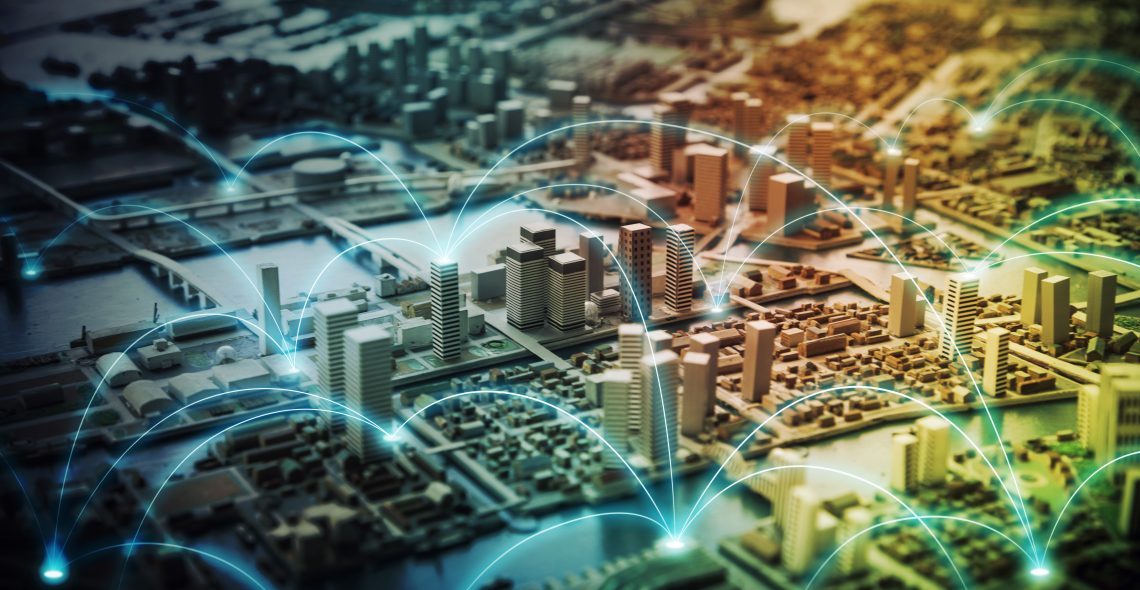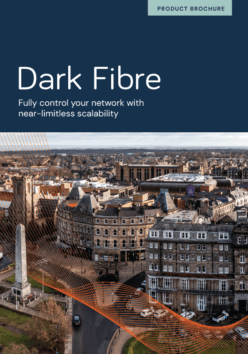UK local authorities have a clear remit and desire to develop the cities or regions they’re responsible for, including improving environmental, social and economic sustainability. They play a key role in facilitating and sustaining smart ecosystems to better serve the people, communities and businesses that inhabit them, transforming whole areas into ‘smart places’ fit for a digitally-focussed future. Connecting smartphones, charging points, sensors, suitably equipped cars and smart homes can improve energy distribution, decrease traffic congestion and even improve air quality.
Smart cities and places invariably use Internet of Things (IoT) devices to collect data generated by public services, private companies and individuals, then analyse and manage that data for real-time use. Technology innovations such as 5G, machine learning, cloud technology and edge processing can provide the tools required to transform passive assets into smart assets.
Although IoT connections are wireless, the underlying technology and communications infrastructure depends on fixed fibre networks. The powerful data centres needed to receive, process and retransmit data to and from applications and sensors rely on low latency, high-speed connectivity with high redundancy. So while 5G networks will be essential, they will need to be underpinned by a physical fibre network and its supporting infrastructure.
The rise of the smart city
Implementing smart devices and better use of data can improve management by local authorities, making them more efficient and responsive. From simply expanding online services to improve their dialogue with citizens, councils could build up to holding public consultations using mobile apps. For example, offering transparent government data and interactive maps can help smart cities create strong relationships with their residents. Analysing data from these services, as well as from smart devices and sensors, can give councils insights into priority issues to make better, more responsive decisions with greater transparency.
Connected transport systems can also deliver smarter mobility and ease of movement. This could include traffic lights that talk with sensors and cars to change their timing in response to real-time traffic, reducing road congestion. Or connected cars (private or ride-sharing) might guide drivers to the closest parking meters or charging docks, while connected bike-sharing programmes could provide data to improve cycle routes.
Transforming city operations
Better connected services and evidence-based decisions can improve health, wellbeing and quality of life for citizens and enhance public safety. Anonymised hyper-localised data could allow police to analyse crime and incident trends for safer streets and faster response times. And real-time monitoring could allow local authorities to address air and water pollution, fire detection, as well as improved energy efficiency in public buildings.
The efficiencies and greater control delivered by improved gathering and analysis of data, combined with IoT connectivity, could offer a real boost to regional development and growth, as well as deliver sustainability gains. However, there are a number of challenges with creating smart cities and places to overcome first.
The challenges of supplying connectivity
The challenges are different for each community, which means that local authorities are uniquely placed to drive this process and build on existing assets. This calls for close collaboration between local authorities, sources of public funding, and third-party connectivity experts and providers.
The most immediate challenge is that most regions, especially rural areas, don’t have the fibre infrastructure to cope with the huge volume of data needed – and expansion plans are hampered by budgetary issues. A more innovative approach to funding, and to forming partnerships, can address this.
Innovative partnerships
Neos Networks’ ongoing work with Aberdenshire Council, Aberdeen City Council and NHS Grampian is just one example of a new approach to address these concerns. Our most recent fibre connectivity project is set to connect 190 public sector sites with a 275 km network, improving public services, boosting economic activity and improving local quality of life. The £10.5 million Public Sector budget was raised as part of a specific financial agreement to create sustainable digital infrastructure for the future of the region, between the UK and Scottish Governments, Aberdeenshire Council and other regional partners. However, this budget would have been insufficient to complete the build on its own, so Neos Networks contributed to affordability by combining our existing assets and our own investment, driven by a long term view of the future commercialisation opportunity.
Another challenge is the public’s concern around data security, both cybersecurity and the retention and use of personal data by the public and private sector. Sharing information and combining it with contextual data for real-time analysis will be key in developing smart places. All smart partners will need to collaborate to raise awareness of the benefits of such connectivity, and to allay public fears over privacy concerns. Transparent commitments, even legislation, may be needed to build trust, including full disclosure about the data used, when and why and a guarantee of cybersecurity to protect personal data.
A holistic approach should also consider how people are likely to use this new connectivity for both living and working, to maximise return on investment for local authorities. This includes engaging everyone, not only the tech-savvy, by providing clear, easy-to-use, user-centric tools and apps with simple data dashboards and interactive infographics.
Working together for a smarter future
Connectivity and communications infrastructure will be at the heart of any project to create a better-connected city or place. While commercial 5G services are essential, the underlying core networks will need high-capacity fibre connectivity to ensure fast, reliable, secure services. Local authorities will need trusted telco partners to deliver this connectivity, with experience in operations and security and data centre services to enable their smart goals.
To find out more about how we enable the connectivity that lies behind (and underneath) connected cities and places, download our Connected Cities eBook.





